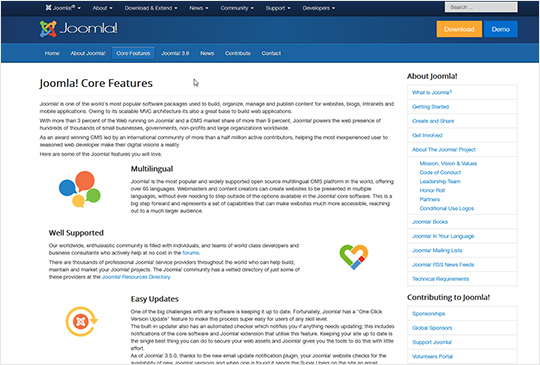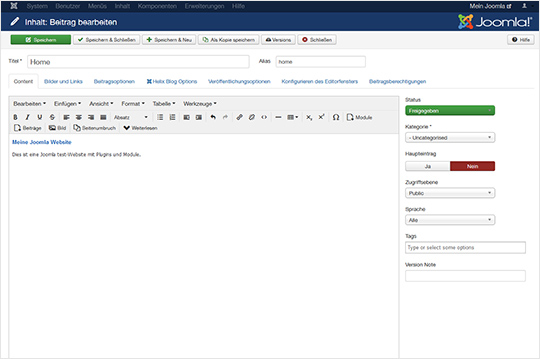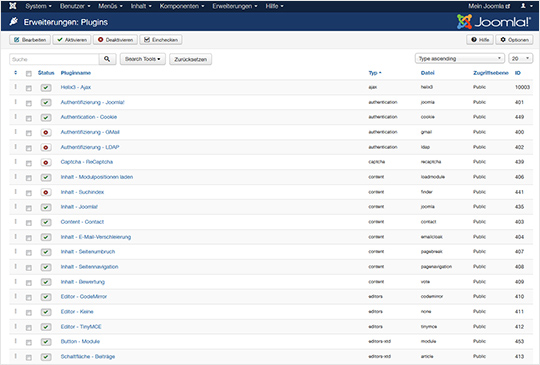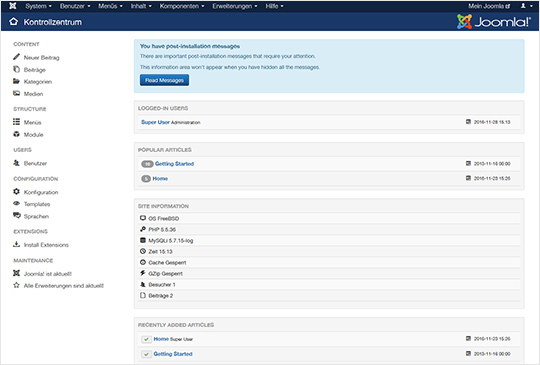Joomla Installation im
AppCenter
In combination with the AppCenter Joomla web projects can be installed quickly and easily. Simply log into the System Configurator and set up your new Joomla website.
Simple updates
The Joomla updates can be easily done via the administration interface. With one click the new version is downloaded and installed. In addition, you have the option of managing and restoring backups via the "AppCenter" application management.


Multilingual websites
With Joomla, websites can be displayed in several languages. Administrators and editors can easily set up pages and menus in 2 or more languages via the backend.
Page editing in the frontend
The Joomla developers have integrated a useful function for editing the content. Administrators and users with the corresponding rights can edit and insert content directly from the frontend..
Media and Banner Management
With Joomla's Media Manager, media can be easily uploaded, managed and organized into folders. The Media Manager is integrated in the article editor. This allows media to be quickly integrated into an article.
Search function
The integrated search functionality allows website visitors to search for specific information. Furthermore, administrators have the possibility to call statistics which show the search parameters of the visitors.


Integrated help pages
If you get stuck with the content management system Joomla, you can access help pages and documentation in the backend.
Modules, Plugins and Templates
Joomla modules are used to display specific content at specific points on the website. Plugins can be used to change content and activate new functions. The templates determine the appearance of the website. In addition to the basic structure, template files contain placeholders for the contents and modules.